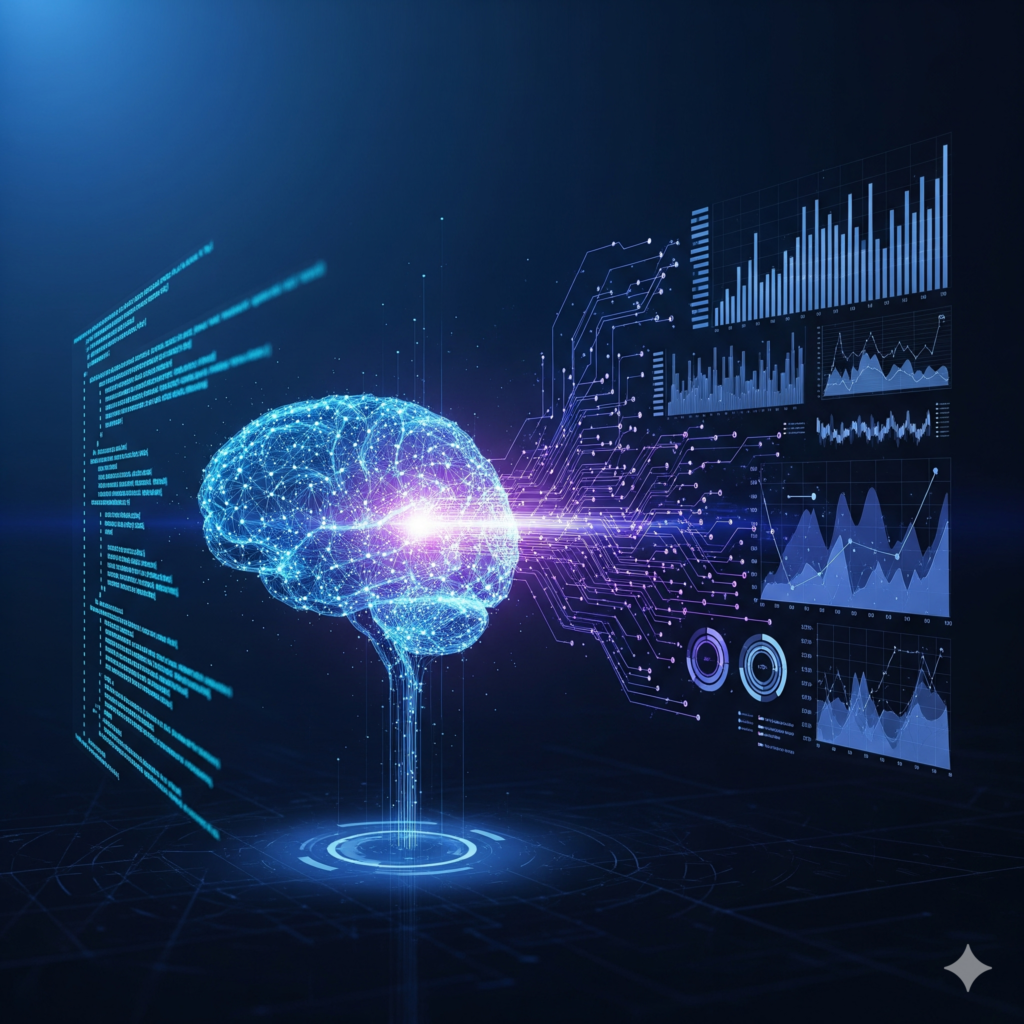
Unlocking Business Intelligence with AI and Data Science Solutions
At Mind Height Technologies, we harness the power of Artificial Intelligence (AI) and Data Science to transform your data into a strategic asset.
These interconnected fields are the cornerstone of modern innovation, enabling businesses to automate complex processes, predict future trends, and make smarter, data-driven decisions.
Our expertise provides you with the competitive edge needed to thrive in a data-centric world.
Expert AI Development and Implementation
Our AI solutions simulate human intelligence to solve your most challenging business problems. We specialize in developing and deploying practical, specialized AI, also known as Narrow AI, to deliver tangible results. Our services include:
- Machine Learning (ML): We build and train advanced algorithms to predict outcomes and discover hidden patterns in your data, from demand forecasting to customer behavior analysis.
- Deep Learning: We utilize multi-layered neural networks for complex tasks like image and speech recognition, powering solutions for advanced automation and analysis.
- Natural Language Processing (NLP): Our NLP solutions enable machines to understand and interpret human language, providing capabilities for sentiment analysis, conversational agents, and automated summarization.
- Computer Vision: We develop systems that allow machines to “see” and interpret visual data, with applications in quality control, autonomous systems, and security.
Comprehensive Data Science Services
Mind Height Technologies’ Data Science services are the engine that powers our AI solutions. We combine statistical analysis, data mining, and data visualization to extract actionable knowledge from even the largest and most complex datasets. Our end-to-end process covers:
- Data Collection & Cleaning: We gather, process, and clean data from diverse sources to ensure its integrity and reliability.
- Exploratory Data Analysis (EDA): We use powerful statistical and visualization techniques to uncover preliminary insights and hidden correlations.
- Predictive Modeling & Analytics: We apply advanced machine learning models to predict future outcomes, enabling business intelligence and proactive strategy.
- Data Visualization & Interpretation: We translate complex data into clear, intuitive visualizations, making it easy for you to understand the results and make informed decisions.
Why Partner with Mind Height Technologies?
Our expertise in AI and Data Science provides your business with a clear advantage:
- Informed Decision-Making: We empower you with data-driven insights, moving your organization from reactive to proactive.
- Enhanced Efficiency: Our AI and ML models automate repetitive tasks, streamlining operations and reducing costs.
- Predictive Analytics: We help you forecast market trends and customer behavior, allowing you to seize opportunities before your competitors.
- Unrivaled Innovation: Our solutions drive new growth opportunities by creating personalized user experiences and solving complex, real-world problems.
We are experts in navigating the challenges of data privacy, security, and potential bias, ensuring your AI and Data Science initiatives are ethical and compliant. By staying ahead of trends like Explainable AI and Edge Computing, Mind Height Technologies is your dedicated partner for leveraging data to stay competitive and drive long-term success.


